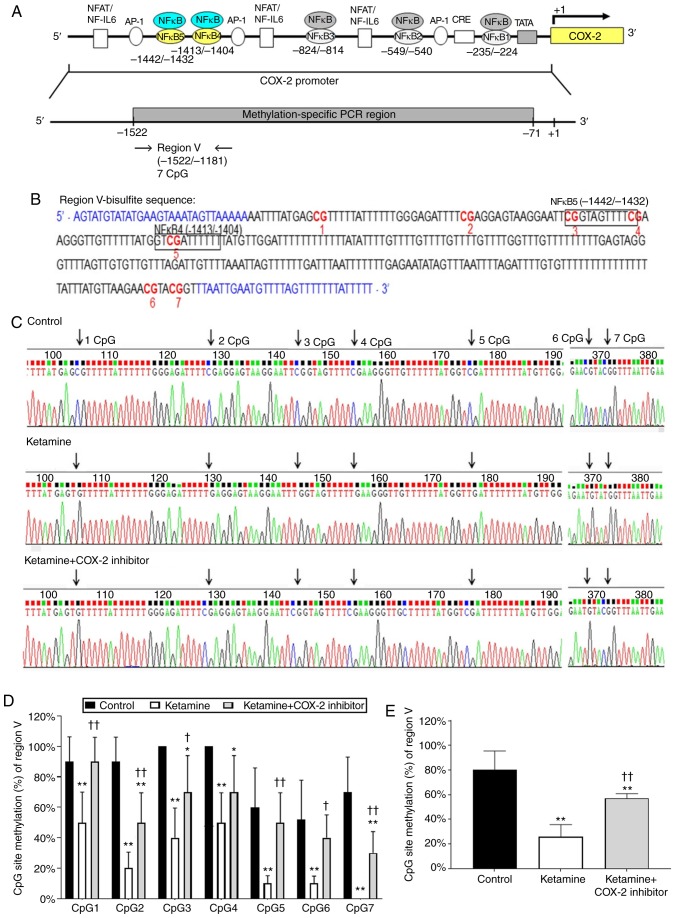Figure 5.
Methylation status of the CpG site in COX-2 promoter region ranging from −1,181 to −1,522 in ketamine-induced ulcerative cystitis. (A) A schematic depiction of region V and sequence ranging from -1,181 to −1,522 relative to the transcription start site (+1) is presented. (B) Bisulfite genomic sequencing analysis for region V in the COX-2 promoter. Genomic sequencing of bisulfite-COX-2 region V-associated 7 CpG sites was obtained from the PCR products from bisulfite-treated DNA using primers (blue color). The site-specific methylation of the CpG sites (dinucleotides) at −1,442, −1,432 and −1,411 bp located the sequence of NF-κB binding sites in the COX- promoter regions ranging from -1,442 to -1,404 bp. The potential site for NF-κB binding was marked with black square box and the genomic NFκB4 was located at -1,413 to -1,404 bp, 5′-GTC GAT TCC C-3′ (Bisulfite sequence of mNFκB4: 5′-GTC GAT TTT T-3′) and NFκB5 located at -1,442 to -1,432 bp, 5′-CGG TAG TTT CC-3′ (Bisulfite sequence of mNFκB5: 5′-CGG TAG TTT TC-3′). (C) Methylation patterns of the bisulfite-COX-2 region V in three groups. CpG sites were highlighted as arrows. (D) The methylation level of region V in the COX-2 promoter. The methylated percentage of each individual CpG site from bladder tissue was presented. (E) The percentage of total seven CpG sites methylation in region IV. The methylation level of region V from the control group showed a 3.11-fold increase compared with in the ketamine group and a 1.40-fold increase compared with in the ketamine+COX-2 group. Values were the mean ± standard deviation for n=6. *P<0.05 and **P<0.01 vs. the control group. †P<0.05 and ††P<0.01 vs. the ketamine group. COX, cyclooxygenase; NF-κB4, nuclear factor-κB binding site.

